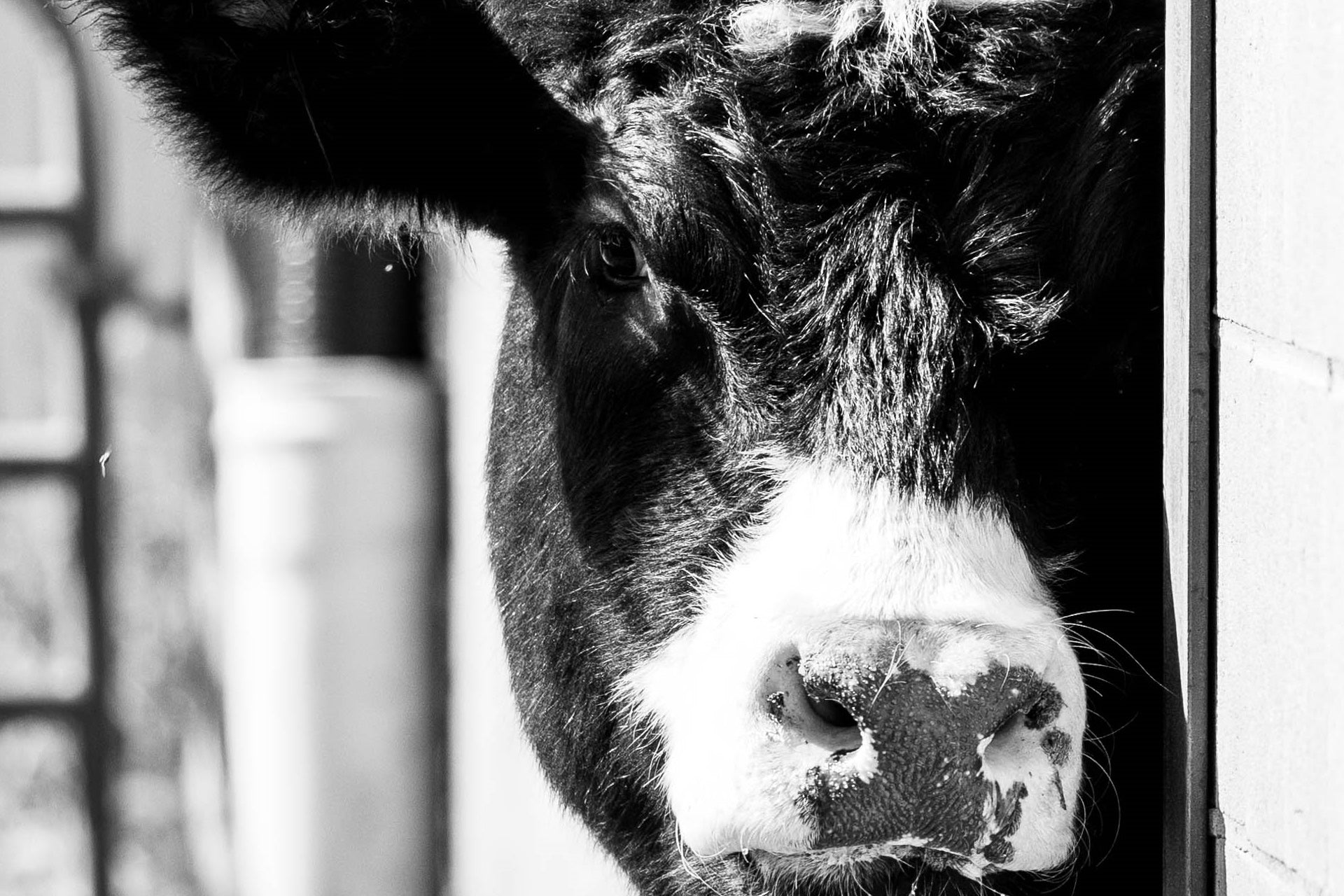
Raising beef cattle on our family-owned, 210-acre farm is a time-honored tradition that requires knowledge, dedication, and hard work. Among the most crucial aspects of cattle farming are the breeding and calving processes. These steps demand careful planning and management to ensure the calves are born healthy and that our farm is productive.
Breeding Practices
Breeding begins with a careful selection of both bulls and cows. We consider factors such as genetic traits, fertility, and temperament. Natural service—where a bull mates directly with the cows—is common on farms in our area. However, artificial insemination (AI) can also be used to introduce superior genetics on smaller farms where housing a bull is not feasible.
At Pusheta Creek, we do both. First, we AI with semen from bulls that help advance our program. Then we turn out a “clean up” bull (herd bull) to mate with cows we missed in the AI process.
Timing is critical in breeding cattle. Heat detection in cows, which signals their readiness to conceive, requires vigilance. Many farmers employ tools such as heat detection patches or electronic monitors to identify optimal breeding times. The goal is to ensure a compact calving season, which simplifies management and allows for uniform calf development.
We focus on Maine-Anjou genetics but have some Angus, Chianina, and Simmental crossbred cows as well.
To improve yields, some beef farmers experiment with crossbreeding—the practice of breeding animals of different breeds to combine desirable traits. While crossbreeding can lead to improved growth rates, feed efficiency, and carcass quality, it also presents risks that require careful management.
Challenges of Crossbreeding
One significant challenge is delivery complications, which can be brought on by size mismatches between the bull and cow. For example, using a bull from a breed known for producing large calves can lead to birthing difficulties in smaller cows. This not only endangers the health of the cow and calf but also increases labor costs and the need for veterinary intervention.
Another issue is the potential for inconsistent offspring. While hybrid genetics can enhance certain traits, it may also result in variability in size, temperament, or growth rates. We have to weigh these risks against potential benefits when selecting breeding pairs.
The Calving Process
Calving season is one of the busiest times on the farm. It runs from late winter into early spring to align with optimal grazing conditions for nursing cows and growing calves. During this period, we closely monitor our expectant mothers for signs of labor, such as udder development, restlessness, or isolation from the herd.
A key responsibility during this period is monitoring the calving pen, especially during overnight hours. I set my alarm every three hours to ensure continuous observation, as labor can begin at any time. This way, I can catch signs of distress, provide timely assistance, or call a veterinarian if complications arise.
The calving pen is typically equipped with adequate lighting, clean bedding, and tools for assisting births. A clean, safe environment for the birth reduces the risk of infections to both the cow and the newborn calf. My favorite addition has been video cameras that let me see what’s happening in the pen without going all the way down to the barn in the middle of the night.
While most cows deliver without assistance, certain complications may require human intervention. Generation after generation, my family has been trained to assist in such situations or to call a veterinarian if necessary. Our goal is always to have a healthy cow and calf, however sometimes you can lose the calf and even the momma.
Veterinary-Assisted Births
In cases where labor becomes prolonged or complications arise, veterinary assistance is often critical. One common intervention is pulling a calf through the birth canal. This procedure involves the use of obstetric chains or straps, carefully attached to the calf’s legs. The farmer or veterinarian applies controlled, steady pressure to help guide the calf out safely. Proper technique and timing are essential to avoid injuring the cow or calf.
I normally do all the pulling myself. If I have to call the vet, we normally end up with a Caesarean section delivery. Yes, cows can deliver by C-section!
The surgical procedure is typically performed when the calf is too large for natural delivery or when the cow’s pelvis is too narrow. During a C-section, the vet makes an incision in the cow’s side and uterus to remove the calf. Although this is a more invasive option, it can be life-saving for both mother and baby. Afterward, the cow requires extra care, including wound management and monitoring for signs of infection.
Aftercare for Calves and Cows
After birth, the calf’s first task is to nurse and receive colostrum, a nutrient-rich milk that boosts its immune system. We check to make sure newborn calves are nursing effectively and may bottle-feed if necessary to supplement weak or orphaned calves. For cows that have undergone assisted births or surgery, postnatal care includes monitoring for signs of distress, ensuring proper hydration, and providing a nutrient-rich diet to support recovery and lactation.
Conclusion
The breeding and calving processes on our family-owned beef farm are both art and science. They require a balance of traditional knowledge, modern technology, and careful management to ensure success. While crossbreeding offers opportunities for increased yield, it also demands thoughtful planning to avoid pitfalls. By adhering to best practices and remaining vigilant during calving season, we can maintain healthy herds and produce nutritious, farm-to-table beef for you.
Amanda Liffiton
Author